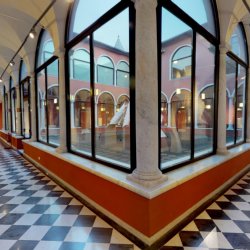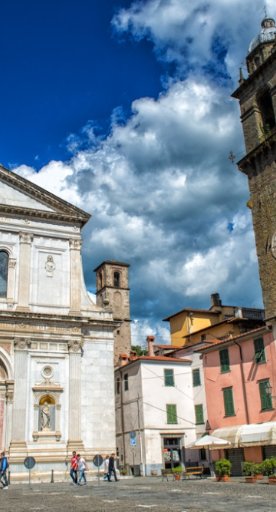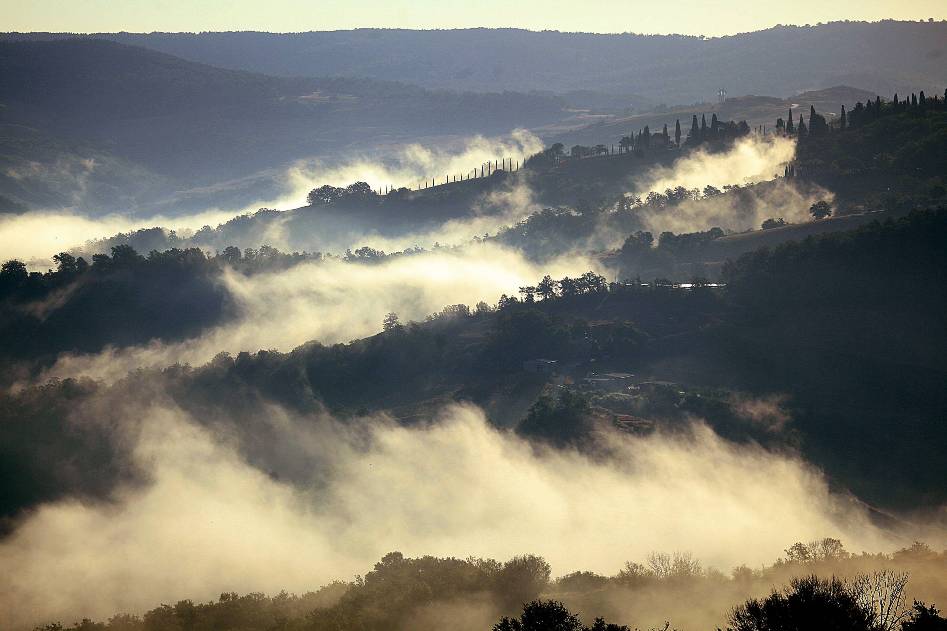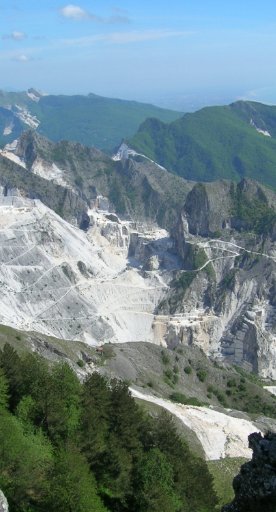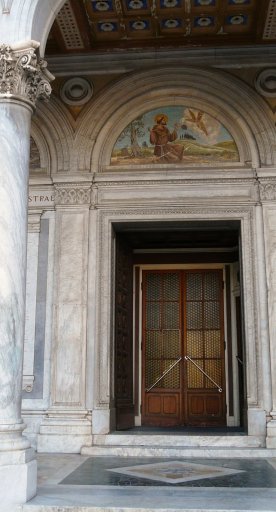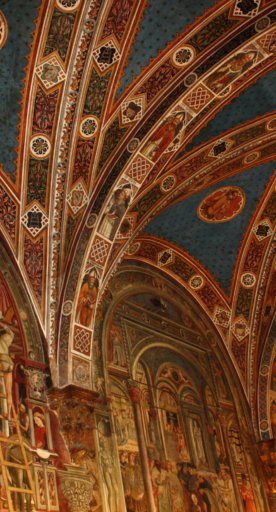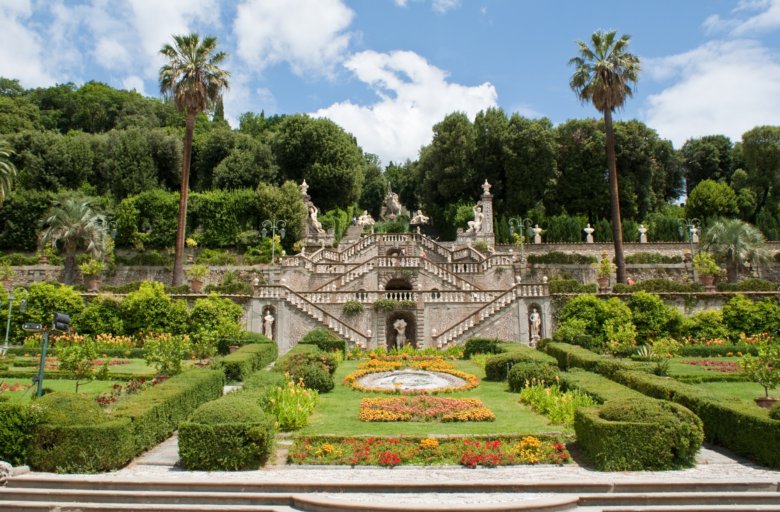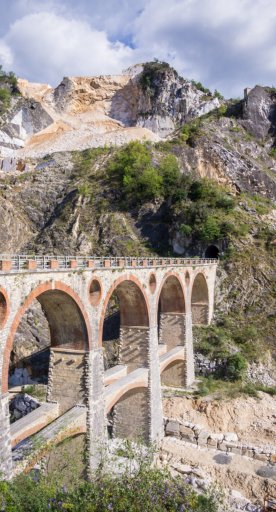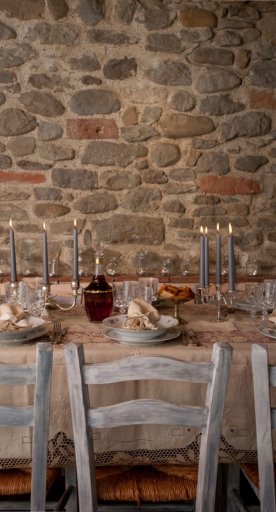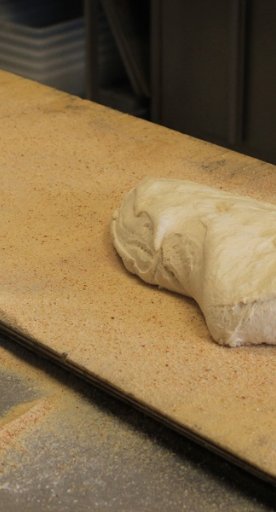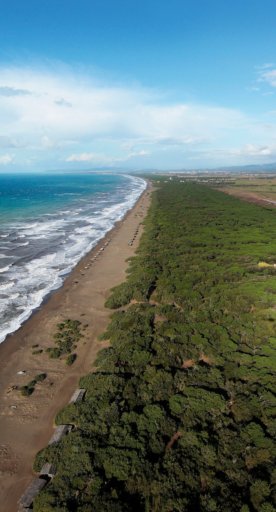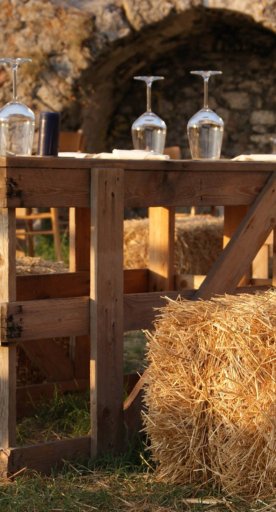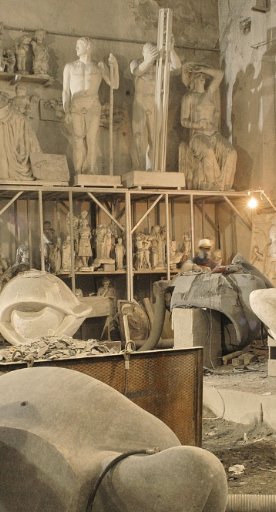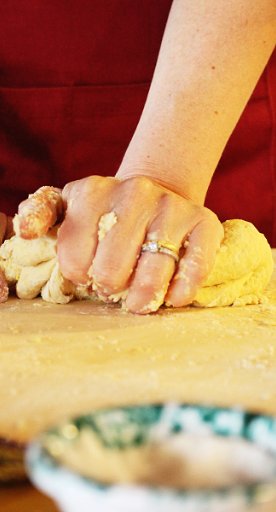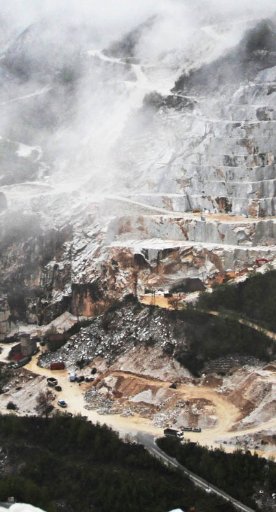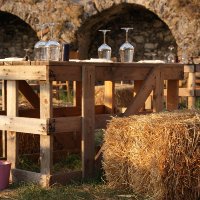
10 things to do in Carrara
What to do and see in the Tuscan city that is a must for any art history lover
Carrara is known worldwide for its white marble and is the headquarters of the Apuan-Versilia marble industry. The history of the city is tighty linked to the presence of this precious material and artists from all over the world came, come and will keep coming to Carrara to choose a piece of this “white gold” for their works.
There are many things to see, do and learn as you stroll through Carrara’s historic centre, here are 10 of those.
-
1.Stand where Michelangelo once stood
-
2.Be silenced by the beauty of the Cathedral
-
3.See a collection of Roman marbles
-
4.Attend an exhibition surrounded by colored marbles
-
5.Find out what a scenic backdrop look like
-
6.Walk the most beautiful Vie
-
7.Watch a show sitting inside a work of art
-
8.Get to know marble, from Michelangelo to contemporary art
-
9.For any other curiosity left about marble
-
10.And what about the taste of marble?
Stand where Michelangelo once stood
Piazza Duomo is the heart of Carrara and takes its name from its dominating building, the majestic Cathedral. To its side stand the bell-tower and the statue of Neptune, better known as the Statue of the Giant, a work by Baccio Bandinelli at the commission of the Doria family. Bandinelli left it incomplete, which was probably his reason for refusing payment; thus the statue languished in the warehouses of Carrara until Alberico I took advantage of it in 1563, installing it in a marble fountain alongside two dolphins.
Opposite the fountain stands a palazzo with a little niche in its facade, home to a cherubwith hands concealing its sex. According to legend, this figurine represents offended modesty, and tradition still holds that it was precisely this spot where adulterous wives were displayed naked to the public.
At the corner where Piazza Duomo meets Via Finelli, an inscription recalls Michelangelo Buonarroti's stay in this building, during his numerous visits to Carrara, where he came to personally choose the most suitable marble for his sculptures.
Be silenced by the beauty of the Cathedral
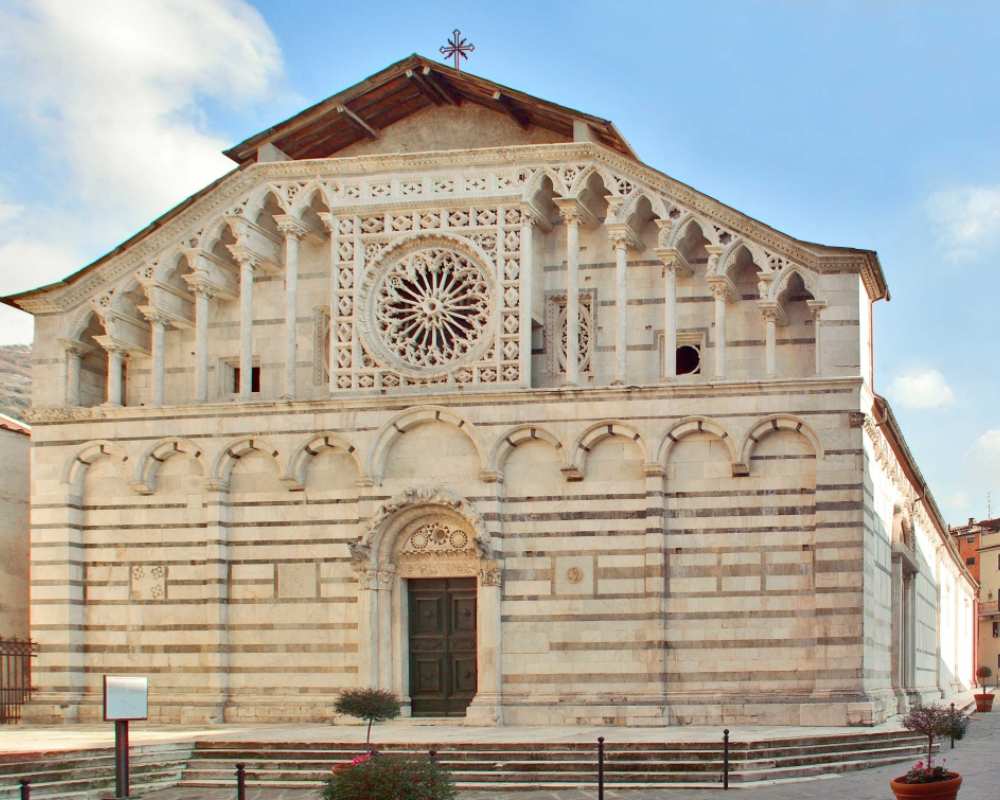
The Cathedral of Sant’Andrea is a Roman Catholic church dedicated to Andrew the Apostle and is famed for its grandiose facade of white Lunense marble, striped with black marble from Colonnata. Almost the entire exterior is covered in local marble and bears Tuscan, Lombard and Parma influences. The church is a unique mix of architectural styles, with a Romanesque layout but Gothic elements. On the façade, there is a wheel with the engraving "Fortitudo mea in rota" (“my strength is in the wheel”): this is the coat of arms of Carrara that appears on many other buildings in the historic centre and underlines the importance that marble has always had for the town’s economy. The bell tower, 33 meters tall, was added in the 14th century. Alongside the cathedral, in the same piazza, is a fountain depicting Andrea Doria resembling Neptune by Baccio Bandinelli.
See a collection of Roman marbles
Palazzo Cybo-Malaspina also has a place in Piazza Duomo. From 1448 the permanent home of the Malaspina family, it melded a 13th-century church with a Renaissance palace and, since 1805, is the seat of the Accademia delle Belle Arti. The façade has a highly Baroque style, dating to the 17th century, with large windows and a larger portal decorated with many marble inserts.
A monument dedicated to the sculptor Pietro Tacca, who was from Carrara, stands in front of the palace.
Attend an exhibition surrounded by colored marbles
Construction on the Church of Suffragio started in 1688 with a project attributed to Innocenzo Bergamini and was later rebuilt in 1800. The façade is simple but enriched with a large marble Baroque doorway featuring a bas-relief of the Madonna with Souls in Purgatory by the sculptor Carlo Finelli. The interior is in the Baroque style and features rich marbles of varying colours that create a dramatic effect, like the high altar in polychrome marble, which is located between two winged skulls. The church was deconsecrated in the mid 20th century, and it now hosts temporary exhibits.
Find out what a scenic backdrop look like
The Carmine Church dates to the 16th century. The main door features a Madonna and Child by Bartolomeo Ordoñez and the interior boasts a polychrome marble altar with a 16th-century painting, dedicated to the Virgin of Carmelo, and an altar dedicated to Santa Maria Maddalena dei Pazzi.
The church is located in front of the place where the ancient sea gate of the medieval city wall stood, that is, near the current entrance to Via Santa Maria. It was conceived as a scenic backdrop of the ancient road that formed, most likely, the ancient core of the city of Carrara.
Walk the most beautiful Vie
As mentioned, Via Santa Maria is just in front of the Carmine Church and is one of the oldest and most characteristic streets in the city. The most important house can be found at number 14: it belonged to Emanuele Repetti, who supposedly hosted the Italian poet and writer Petrarch in 1343.
Another important street of Carrara is Via Loris Giorgi, beautiful and lined with well-preserved palaces from the 17th and 18th centuries.
Watch a show sitting inside a work of art
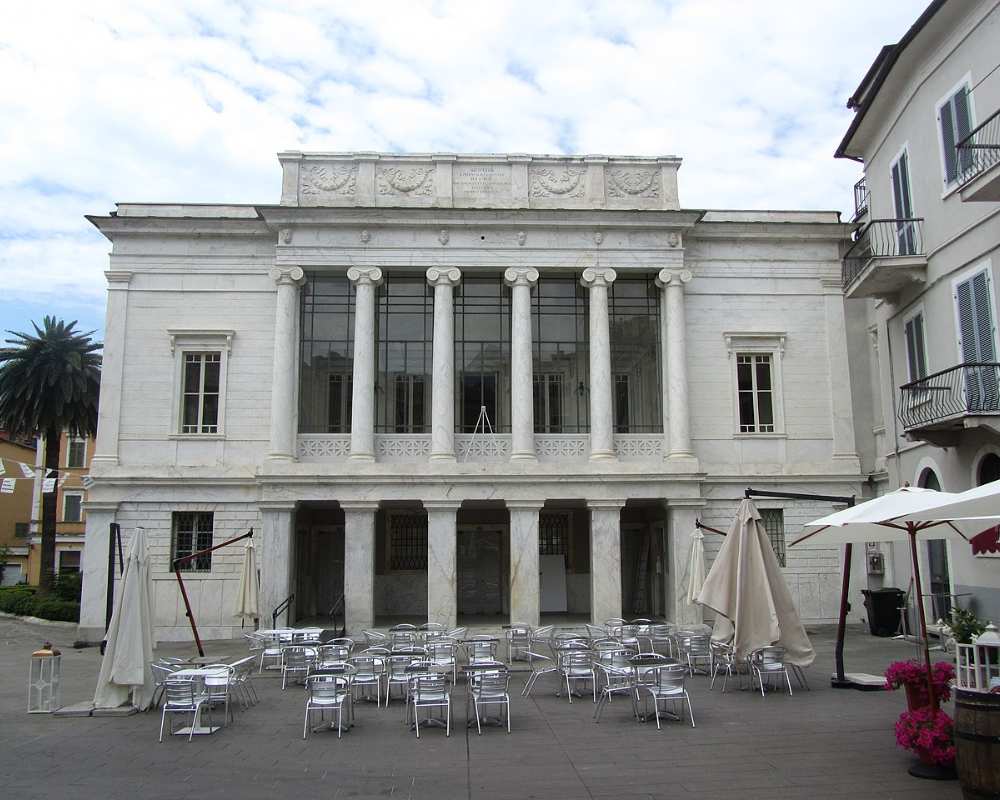
Piazza Alberica is another important piazza, with some of Carrara's magnificent noble palaces and a fountain with a Neoclassical statue dedicated to Maria Beatrice d’Este by Pietro Fontana.
Right behind the Piazza, close to a monument to Giuseppe Garibaldi by Carlo Nicoli, is the Teatro degli Animosi, a marble Neoclassical work built in the 19th century. And yes, inside and out, it's marble!
Get to know marble, from Michelangelo to contemporary art
The recovered and restored former convent of San Francesco is today home of the MudaC - Museum of Arts in Carrara, dedicated to contemporary art and to the artistic development of the city and its deep connection with marble.
And if the link you want to explore is that between the marble of Carrara and Michelangelo, then hurry to CARMI - Carrara and Michelangelo Museum, in the 19th-century Villa Fabbricotti, where three floors are dedicated to this theme!
For any other curiosity left about marble
Head straight to the Museum of Marble. Founded in 1982, it contains artefacts and documents on the culture of marble and includes an outside section boasting the most beautiful “Marbleteque” in Italy: 310 large marble samples, extracted in the Apuan area and in other parts of Tuscany, Italy and abroad.
And what about the taste of marble?

A food highlight of the area, certified by the IGP quality mark, is undoubtedly the Lardo di Colonnata, named after its hometown, a small village perched among marble quarries near Carrara. The calories of this cured meat, salted and matured inside special marble tanks, were key to support the work of quarrymen. Today this white, soft, fresh and fragrant delicacy is tasted cut into thin slices, paired with toasted bread.


